CHARACTERISTICS OF SAPPHIRE BY COUNTRY OF ORIGIN
The color, transparency, saturation, and shape of rough varies by source, with rough usually having characteristics particular to the source. The straight color banding in Kashmir sapphire is a characteristic feature that can be a clue in determining the country of origin. These differences are due to different environmental conditions at the time of formation. Currently, advances are being made to better determine country of origin through the use of instruments such as the spectrophotometer and IMA (ion microanalyzer), but source can often be verified visually in material that shows distinctive characteristics. Here we compare eight sources of sapphire, exploring the differences in color from one locality to the next while acknowledging the distinct beauty of Kashmir sapphire. |
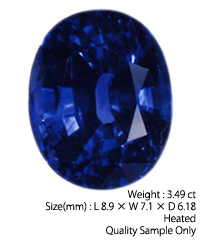 |
Sri Lanka
Since before the time of Christ, Sri Lanka has been a veritable treasury of gemstones, producing a wide variety that includes ruby, topaz, amethyst, cat’s eye, garnet, tourmaline, and moonstone, as well as sapphire. Many sapphires from Sri Lanka are large stones exhibiting light color and a high level of transparency, with their beauty lying in a distinctly purplish blue hue. A slightly purplish stone with an attractively balanced mosaic pattern of tones, as in the photograph above, is a gem-quality Sri Lankan stone. |
|
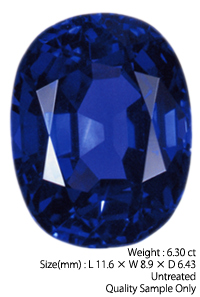
|
Myanmar (Burma)
Mining in the Mogok area of Myanmar is said to have started before the 15th century. Production yield is low, but large, beautiful stones are mined. Incidentally, the production ratio of sapphire to ruby in this area is said to be about 1 to 500. If the mosaic pattern is well-balanced, these dark blue sapphires will be classified as gem quality, but those with insufficient brilliance become too dark and lose their beauty. Burmese sapphires are usually not heat-treated. |
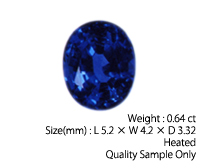 |
Pailin
(Cambodia-Thai Border)
The area of Pailin in Cambodia has produced ruby and sapphire since the 15th century, with full-scale production starting there in 1875. At one time, more than half the world’s sapphire production came from Pailin. With its reputation for quality, Pailin sapphire played an important role until the late 1960s. However, many of these sapphires are a little too dark, as in the photograph above, and they come up short when compared to gem-quality Sri Lankan material. |
|
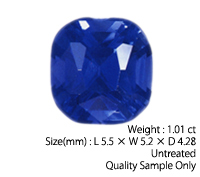
|
Kashmir
Kashmir sapphire has a soft blue color, as shown in the photograph above. This highly saturated blue- elegant, subdued, and with full body-possesses an indescribable beauty. There is almost no current production, but large quantities were mined and polished about 100 years ago, and these occasionally reenter the market. Today, Kashmir sapphires are often seen in antique jewelry at major auctions. Kashmir sapphire is usually not heat-treated. |
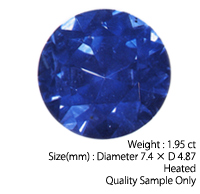 |
Montana (United States)
The presence of sapphire in Montana was discovered in 1865, but serious mining started in 1891 in association with the mining of gold. Today, however, quantities have not reached the point of making an impact on the world market. Characteristic of Montana sapphire is a “watery” appearance, as in the photograph above. While not all stones are necessarily light, the blue color generally lacks depth. Fancy sapphires in colors such as purple, yellow, and green are also found in Montana. |
|